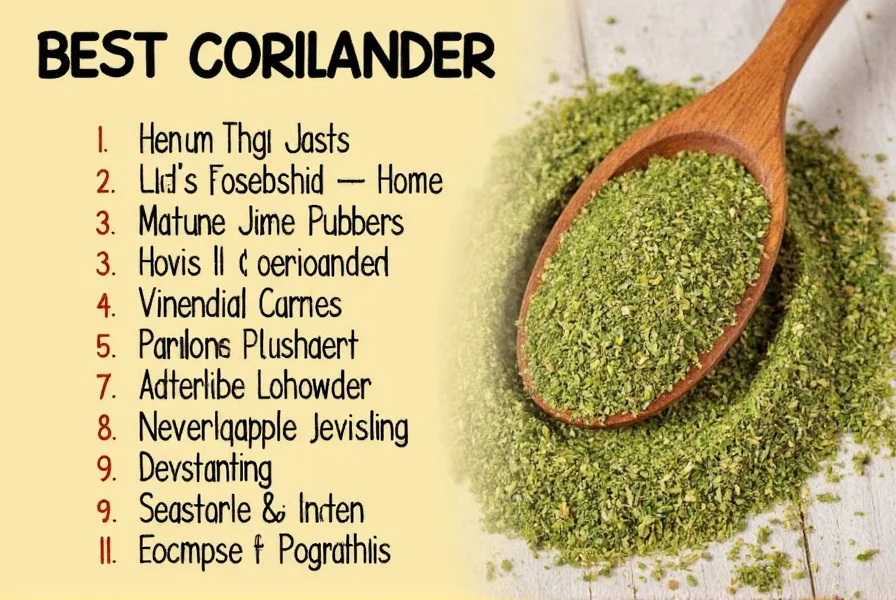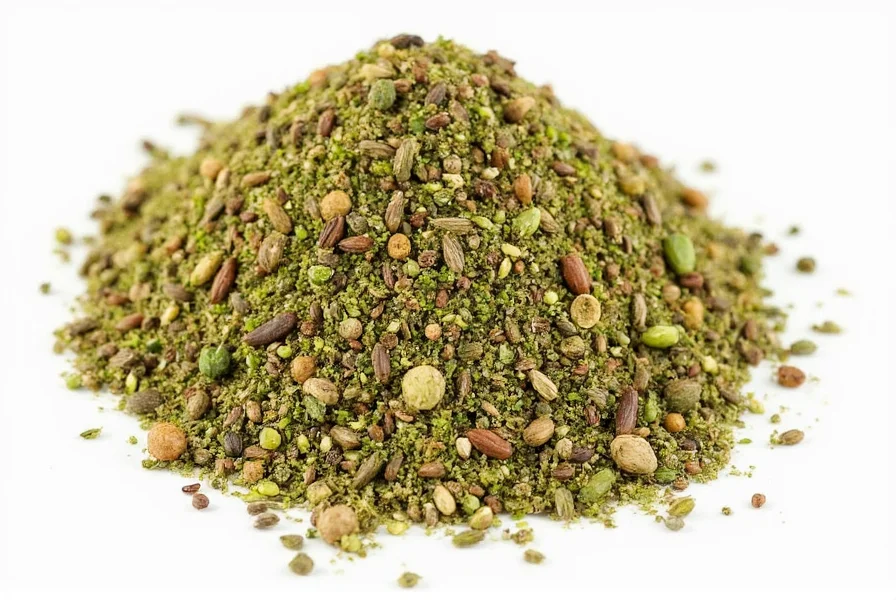Coriander, known as cilantro when referring to its fresh leaves, is a staple herb in global cuisines. Whether you've run out of this essential ingredient or dislike its polarizing flavor, finding suitable replacements can save your recipe. Understanding the distinct characteristics of coriander—both its fresh leaves and dried seeds—is crucial for selecting the right substitute without compromising your dish.
Understanding Coriander and Substitution Needs
Fresh coriander leaves (cilantro) offer a bright, citrusy flavor with a hint of pepper, while coriander seeds provide a warm, nutty, slightly citrusy taste when ground. People seek substitutes for various reasons: unavailable ingredients, personal taste preferences (particularly the so-called "cilantro soap gene"), dietary restrictions, or regional availability issues.
Top Fresh Herb Substitutes for Cilantro
When replacing fresh coriander leaves, consider both flavor profile and texture. The best alternatives maintain the herb's role in balancing rich flavors and adding freshness to dishes.
Parsley
Curly or flat-leaf parsley serves as the most accessible cilantro substitute with a milder, grassier flavor. Use it in equal amounts when coriander's strong flavor would dominate a dish. This works particularly well as a cilantro substitute for salsa where you want freshness without the distinctive coriander taste. Flat-leaf parsley offers better texture similarity to cilantro in finished dishes.

Culantro
Often confused with cilantro, culantro (Eryngium foetidum) has a stronger, more persistent flavor and tougher leaves. Use one-third the amount of culantro compared to cilantro, as its flavor intensifies during cooking. This makes it an excellent choice for Caribbean and Latin American dishes where coriander's presence is essential but hard to source.
Basil and Mint Combination
For Southeast Asian and Indian recipes, a 1:1 mix of basil and mint replicates coriander's bright notes. This combination works surprisingly well as a replacement for coriander in Thai curry or chutneys. The basil contributes sweetness while mint adds the necessary cooling element.
| Substitute | Best For | Ratio | Flavor Notes |
|---|---|---|---|
| Parsley | Salsas, salads, garnishes | 1:1 | Milder, grassier flavor |
| Culantro | Caribbean stews, soups | 1:3 | Stronger, more persistent |
| Basil + Mint | Asian dishes, chutneys | 1:1 mix | Sweet with cooling finish |
| Dill | Middle Eastern recipes | 1:1 | Earthy with lemon notes |
Dried Coriander Seed Alternatives
When your recipe calls for ground coriander seeds, the substitution strategy differs significantly from fresh herb replacements. The warm, citrusy notes of coriander seeds play a crucial role in spice blends and marinades.
Cumin
Cumin makes the most versatile substitute for coriander seeds, offering earthy warmth with a slightly different flavor profile. Use ¾ teaspoon cumin for every 1 teaspoon of coriander. This works particularly well in Middle Eastern spice blends and chili recipes where both spices commonly appear.
Caraway Seeds
Caraway provides the closest flavor match to coriander seeds with its citrusy, slightly sweet profile. Grind caraway seeds fresh for best results. Use a 1:1 ratio when substituting in European and North African dishes. Many professional chefs consider this the best option for replacing coriander in rye bread recipes.
Garam Masala
For Indian recipes specifically, garam masala can replace coriander seeds while adding complementary spices. Use ½ teaspoon garam masala for every 1 teaspoon coriander. This substitution works well in curry recipes when coriander is unavailable, though it will add additional warmth from other spices in the blend.
| Seed Substitute | Best Applications | Substitution Ratio | Adjustment Tips |
|---|---|---|---|
| Cumin | Chili, taco seasoning, curry | ¾:1 | Add citrus zest to mimic coriander's brightness |
| Caraway | Rye bread, sauerkraut, stews | 1:1 | Toast seeds first for enhanced flavor |
| Garam Masala | Indian curries, rice dishes | ½:1 | Reduce other spices in blend |
| Fennel Seeds | Mediterranean dishes | ⅔:1 | Use with lemon for brighter profile |

Practical Substitution Guidelines
Successful coriander substitution depends on understanding your specific recipe's requirements. Consider these factors when choosing a replacement:
- Cuisine type: Mexican dishes often tolerate parsley better than Middle Eastern recipes, which might need dill or a basil-mint blend
- Recipe stage: Add delicate substitutes like parsley at the end of cooking, while hardier herbs like culantro can withstand longer cooking times
- Flavor balance: When substituting for coriander in guacamole, add a squeeze of lime to compensate for lost citrus notes
- Texture needs: For garnishes, choose substitutes with similar leaf structure to maintain visual appeal
When Substitutions Fall Short
Certain dishes rely so heavily on coriander's unique flavor that substitutes create noticeably different results. Traditional chimichurri, some Indian chutneys, and authentic Thai curry pastes lose essential character without real coriander. In these cases, consider making a special trip to find fresh coriander or using frozen cilantro, which preserves flavor better than dried alternatives.
Expert Tips for Successful Substitution
Professional chefs recommend these advanced techniques when coriander isn't available:
- Combine multiple substitutes: Use ½ part parsley with ½ part mint for balanced flavor in Mexican dishes
- Add citrus zest: A small amount of lime or lemon zest can mimic coriander's bright notes in fresh applications
- Adjust acidity: When replacing coriander in salsa, increase lime juice slightly to maintain flavor balance
- Toast seed substitutes: Lightly toasting cumin or caraway before grinding enhances their complexity
- Consider regional alternatives: In Caribbean cooking, use shadow beni (culantro) which grows abundantly in those regions











 浙公网安备
33010002000092号
浙公网安备
33010002000092号 浙B2-20120091-4
浙B2-20120091-4